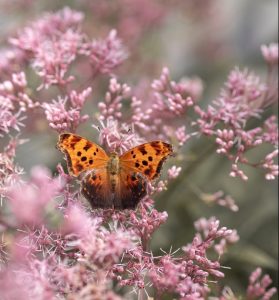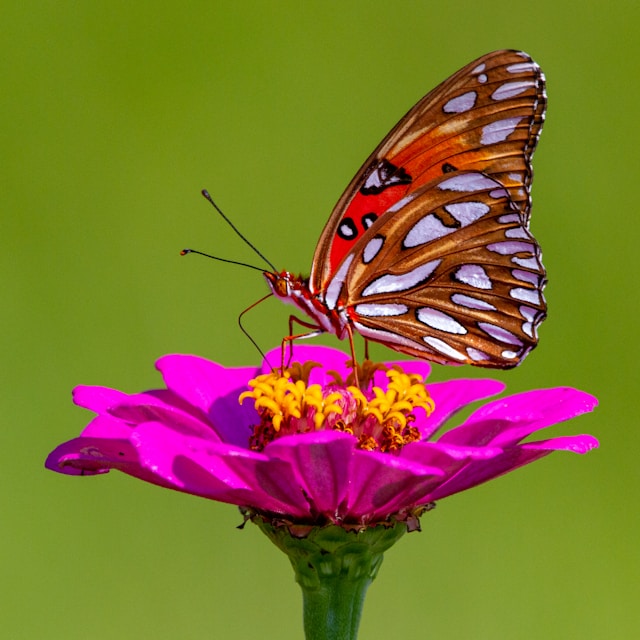Editor’s note: “A study published in 2024 found that a change in insecticide use was a major factor in driving butterfly declines in the Midwest over 17 years. The authors, many of whom were also part of the current study, noted that the drop coincided with a shift to using seeds with prophylactic insecticides, rather than only spraying crops after an infestation.”

Photo by Aaron Burden on Unsplash
“Only the Pacific Northwest didn’t lose butterfly population on average. This trend was largely driven by an irruptive species, meaning one with extremely high abundance in some years – the California tortoiseshell. When this species was excluded from the analyses, trends in the Pacific Northwest were similar to other regions.”
“Imagine a world without the delicate flutter of butterfly wings or the vibrant splashes of color they bring to our gardens. Sadly, this could become a reality sooner than we think. A recent study published in the journal Science has revealed a shocking decline in butterfly populations across most regions of the United States.”
By Bobby Bascomb / Mongabay
A study in the United States found a dramatic 22% decline in butterfly populations between 2000 and 2020.
Previous research has focused on a specific butterfly species or regions of the country. For this study, researchers wanted to understand overall butterfly population trends across the U.S.
They gathered records of 12.6 million individual butterflies across 554 species, from more than 76,000 surveys, many conducted by citizen science groups in nearly 2,500 locations.
The researchers found that total butterfly numbers were down by 22% over the first two decades of this century. It’s a concerning trend, said Collin Edwards, lead author of the study and an ecological modeler with the state of Washington Fish and Wildlife Department.
To put it in context, “for someone who was born in 2000, one out of every five butterflies had disappeared by the time they became an adult,” Edwards told Mongabay by phone.
The 22% decline is an average. Of the 554 species examined, 107 declined by at least 50% and 22 species declined by more than 90%.
At the same time, nine species saw population increases. The eastern population of the monarch (Danaus plexippus) doubled in 2025, though its overall population is still down roughly 80%, prompting the iconic butterfly to be proposed for the U.S. endangered species list.
Several of the nine species that increased in population are predominantly found in Mexico; the U.S. is the northern edge of their range. Edwards said with a warming climate, many butterfly species are shifting their habitats north.
“If the southern edge of their limit is just barely cold enough for them, as the climate warms, that’ll get worse. But the northern edge where it used to be a little bit too cold will start to get warm enough,” Edwards said.
This study adds to a growing body of research showing a global decline in insect populations, raising concerns about a depleting food source for many animals including birds and frogs, which are facing population crashes in their own right.
Furthermore, while bees get most of the glory, butterflies are also critical pollinators. A 2021 study in Texas found butterflies provide about $120 million per year in pollination services for cotton.
Tierra Curry, a senior scientist with the Center for Biological Diversity, told Mongabay by email that “this is a landmark study” that “shows that we need to take urgent action to safeguard butterflies. Every action we take to help pollinators also helps us because our fate is directly tied to their health.” Curry wasn’t involved with this research.
Edwards said this study focused on butterflies because that’s the order of insects they had data for, but he added there’s “every reason to think that if butterflies are declining there are probably similar declines in other groups of insects,” especially since the drivers of decline — habitat loss, climate change and pesticides — affect most insects.
Banner Photo by Joshua J. Cotten on Unsplash A gulf fritillary butterfly on a zinnia.

